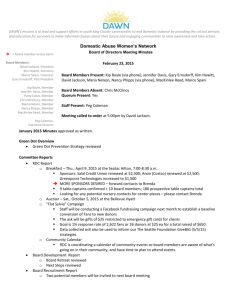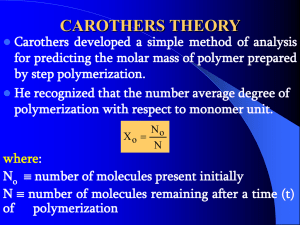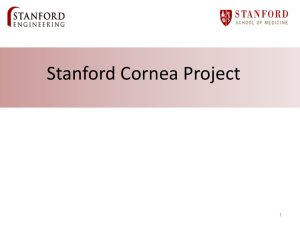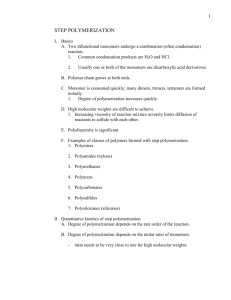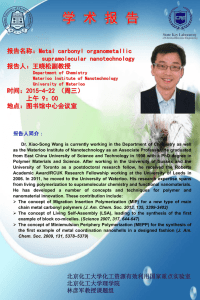Lab 1 Lecture
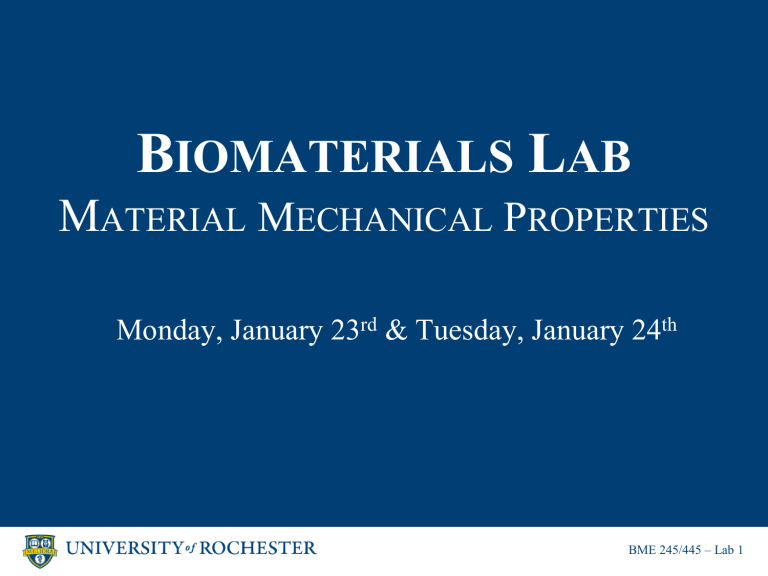
B
IOMATERIALS
L
AB
M
ATERIAL
M
ECHANICAL
P
ROPERTIES
Monday, January 23 rd & Tuesday, January 24 th
BME 245/445 – Lab 1
P RE-LAB
Sign-in
Quiz
(Engler. 2006)
W
EIGHT
P
ERCENT
C
ALCULATIONS
Wt % = (Mass Solute)/(Total Solution Mass) × 100%
1.
Determine total mass solute
2.
Determine mass PEG
3.
Determine mole ratio of PEG MOLECULE to Thiol
MOLECULE , using number of reactive species each & molecular weight
4.
Solve for mass/vol of each
T
HIOL
-N
ORBORNENE
P
RECURSORS
PEG-Norbornene:
•
2kD-PEG
Thiol:
•
2SH
•
10kD-PEG
• 20kD-PEG
•
3SH
• 4SH
10kD-PEG + 3SH
3SH
10kD-PEG formation of a crosslinked mesh network
T
HIOL-ENE
P
OLYMERIZATION
1 Arm
PEG
(n=56)
Norbornene
Fairbanks, B.D. Adv Mater .
2009
S
ECTION
1
Influence of precursors on end-stage mechanics
Look at different PEG-thiol combinations, constant polymerization time
Measure young’s modulus of resulting network
Make connections between precursors and mechanics
Number of “arms”
Mesh size
Steric hindrance ?
S
ECTION 2
Determine network growth mechanism
PEG10,000 3SH
Look at how network develops over time
Step-growth polymerization?
Chain-growth polymerization?
Network “interaction” is related to observed mechanics
Step-Growth Polymerization. Wikipedia . 2011
H
YDROGEL
S
YNTHESIS
1.
10wt% PEG in DMSO (20wt% for 2kD-PEG)
2.
solution is thoroughly mixed (solublize PEG)
3.
1:1 mole ratio of thiol-linker
4.
10% photo-initiator by volume
5.
40μL placed in 1mL syringe (tip cut off)
to create cylindrical hydrogel sample geometry
6.
exposed to UV-lamp for 10min
7.
hydrogel removed and placed in DMSO
M
ECHANICAL
T
ESTING
MTS system in Materials Testing Lab – 5N load cell
“Benoit Lab Test”
cyclic compression at 5-10% elongation of gel height
0.1mm/sec compression rate
Modulus calculated using 1-4% strain range (linear)
S
ECTION
3
Investigate Tensile Properties & Fracture of Biomaterials
Load sample into PASCO stress/strain apparatus
Begin data collection, steadily turn handle to apply tension
Once bar breaks, stop data collection and remove sample
Export data to Excel for post-lab calculations
Expected vs. observed behavior for each material
Take image of fracture site using stereo microscope
Observed differences in fracture mechanics?
Safety
General
Lab glasses, gloves, closed toed shoes
No food, no drinks, no applying makeup
Specific
DMSO: Eye, skin irritant; ingestion leads to nausea, vomiting, diarrhea, central nervous system damage
Thiols: Eye, skin, respiratory irritant; cause nausea, headache, vomiting; unpleasant smell
Use in HOOD!!!


